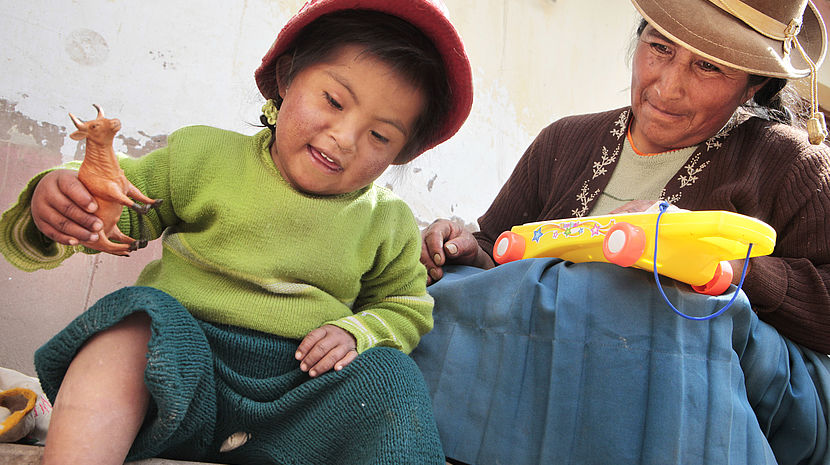International Day of Deafblindness

On 27 June 2015 we celebrate International Day of Deafblindness. This day encourages more awareness and action for deafblind persons.
What is deafblindness?
Deafblindness is a distinct and unique disability affecting vision and hearing. It is sometimes described as a multi sensory impairment. The level of hearing and vision loss varies from mild to profound, low vision to blindness. Although most individuals living with deafblindness have some functional use of vision and hearing, the combination of losses greatly impairs one's ability to gather auditory and visual information and creates intensive communication and learning needs that cannot be met by programmes designed solely for persons who have low vision or are blind; or persons who are hard of hearing or deaf. It limits activities of a person, severely reduces access to communication, and restricts full participation in society to such a degree that society is required to facilitate specific services, environmental alterations and/or technology.
Our work in deafblindness
In CBM work in the area of deafblindness includes:
- Advisory work- A groups of advisors who guide CBM’s work in the field. They produce documents and guidelines to assist regional and country offices and CBM partners in this area of work.
- Work with International alliances - CBM is a member of the board for Deafblind International, which is an international agency which includes organisations working in the area of deafblindness. Here CBM also collaborates with Sense International; Perkins International and Royal Dutch Kentalis. This collaboration is also carried out in the filed in Low and Middle Income Countries. CBM also liaises with the World Federation of the Deafblind.
- Partner work: In 2014 CBM supported:
- The education of 79 learners who are deafblind in schools for the deaf or schools for the blind where there are specialist units; with an additional 230 in other educational programmes;
- 4,152 were supported in CBR programmes (including men, women, boys and girls)
- The provision of specialist training in Tactile Communication
- Specialist Teacher education
- Support for attending international conferences for professional development and to present their work.
Life time achievement award
The Deafblind International's life time achievement award went to Mr Joseph Morrissey (posthumously) in May 2015.
Joe Morissey was a long time CBM co-worker. Nicknamed 'Mr. Deaf', Joe a led a life dedicated to achieving the best for all persons with disabilities, but particularly deaf people and people living with deafblindness living in low and middle income countries. After retirement he decided to stay in his adopted land of Africa, staying in Moshi, Tanzania to continue his mission.
Joe lived, breathed and embodied his passion and vision for a world of equity for all, underpinned by his Christian faith. He personally supported thousands of deaf and deafblind people through their education in order that they become leaders to change the lives of others so that they could in turn become advocates for themselves.
Case study - FUNDAL
FUNDAL (Guatemalan Foundation for Deafblind Children) was born as an inspiration through Alex, a small deafblind boy who conquered the hearts of the Bonilla Sinibaldi family and motivated them to establish the first organisation of its nature in Guatemala. FUNDAL is a private, not for profit organisation, founded since 1998. Since it's founding days it has gained national and international recognition in work related to deafness and deafblindness. The emphasis is on specialist provision to promote inclusion. They provide educational training for children and adolescents with deafblindness and multiple disabilities, through programmes ranging from early intervention to vocational training, including transition services, rehabilitation and vocational training for young adults. The services are delivered within the communities in which the learners with deafblindness live. They encourage family participation and inclusive activities. The foundation also has activities of political incidence to achieve legal acknowledgement of Deafblindness as a specific disability, and thus continues to safeguard the observance of these rights.
Widman (from a small village in Guatemala) is an outgoing, curious, and fun-loving boy who loves to talk. His favourite activity is playing ball with his brothers and cousins. When Widman was 6 months old, his parents realized that he could not see and they sought professional help straight away. As a result, Widman began to receive educational services very early in life. At the age of 3, he started attending a special school, where he was diagnosed with microcephaly and a mild hearing loss in addition to his blindness. Currently, he attends the special school 3 days per week. The other 2 days of the week he attends a regular local primary school where he enjoys being with and learning with his peers.